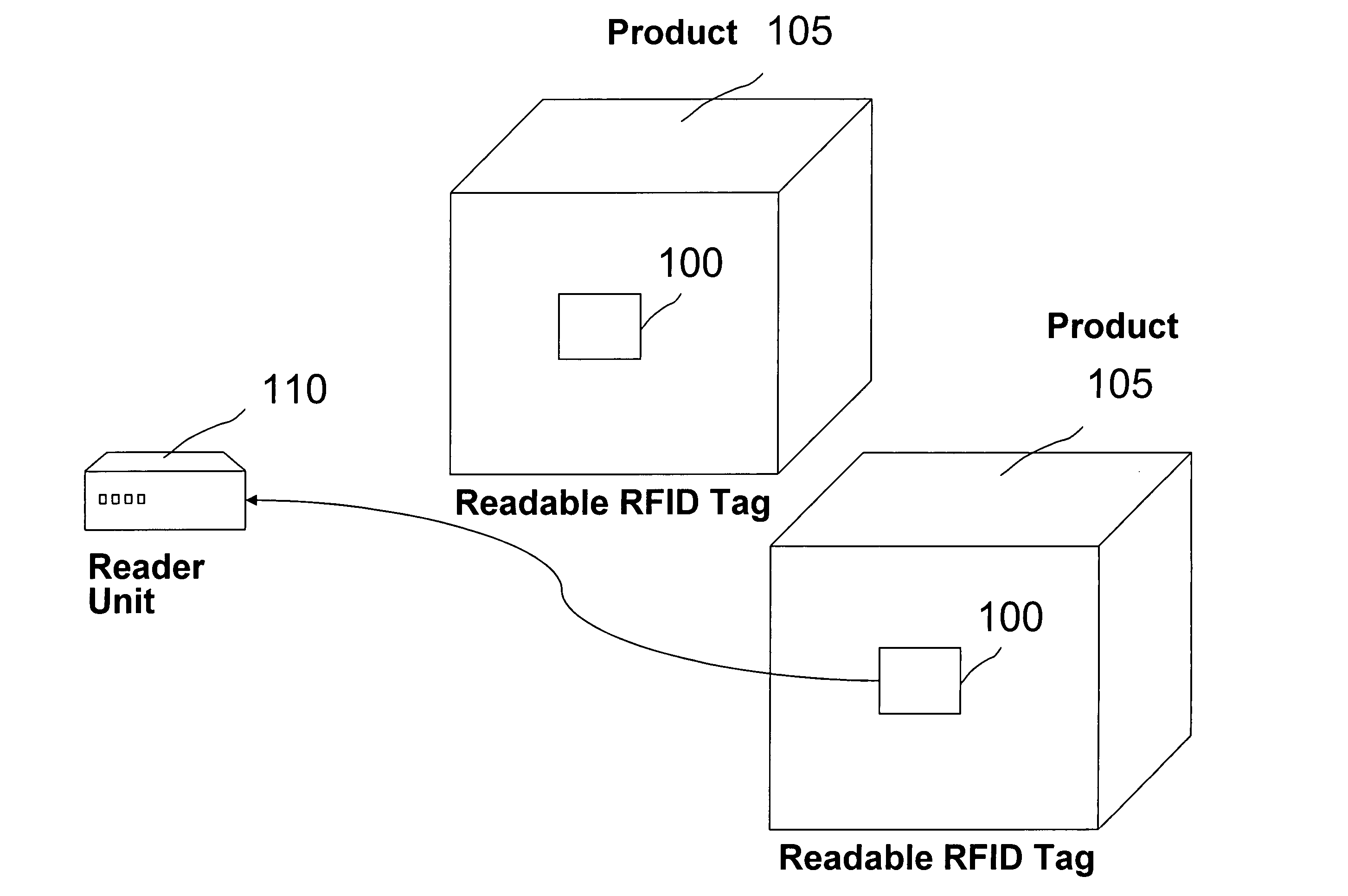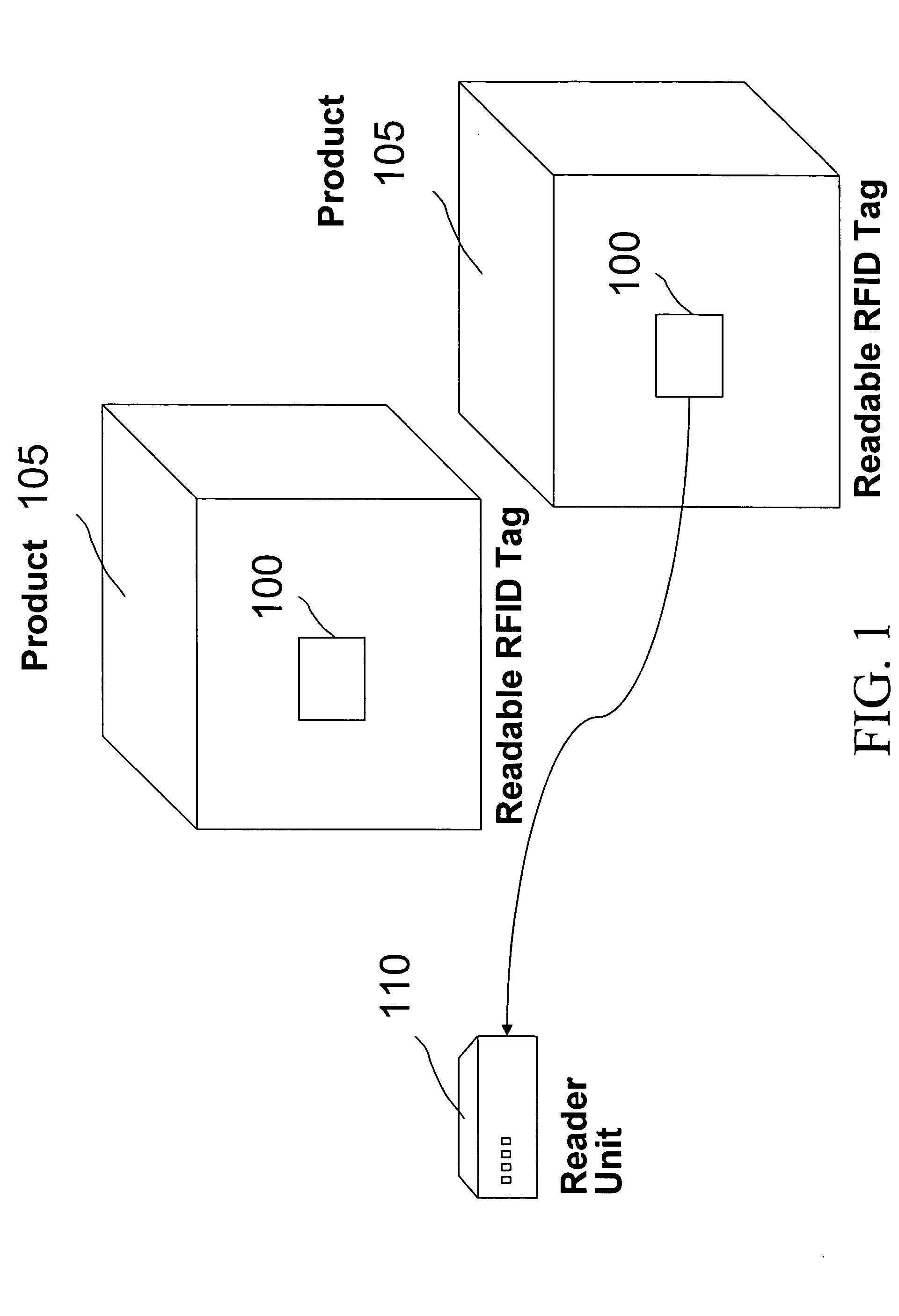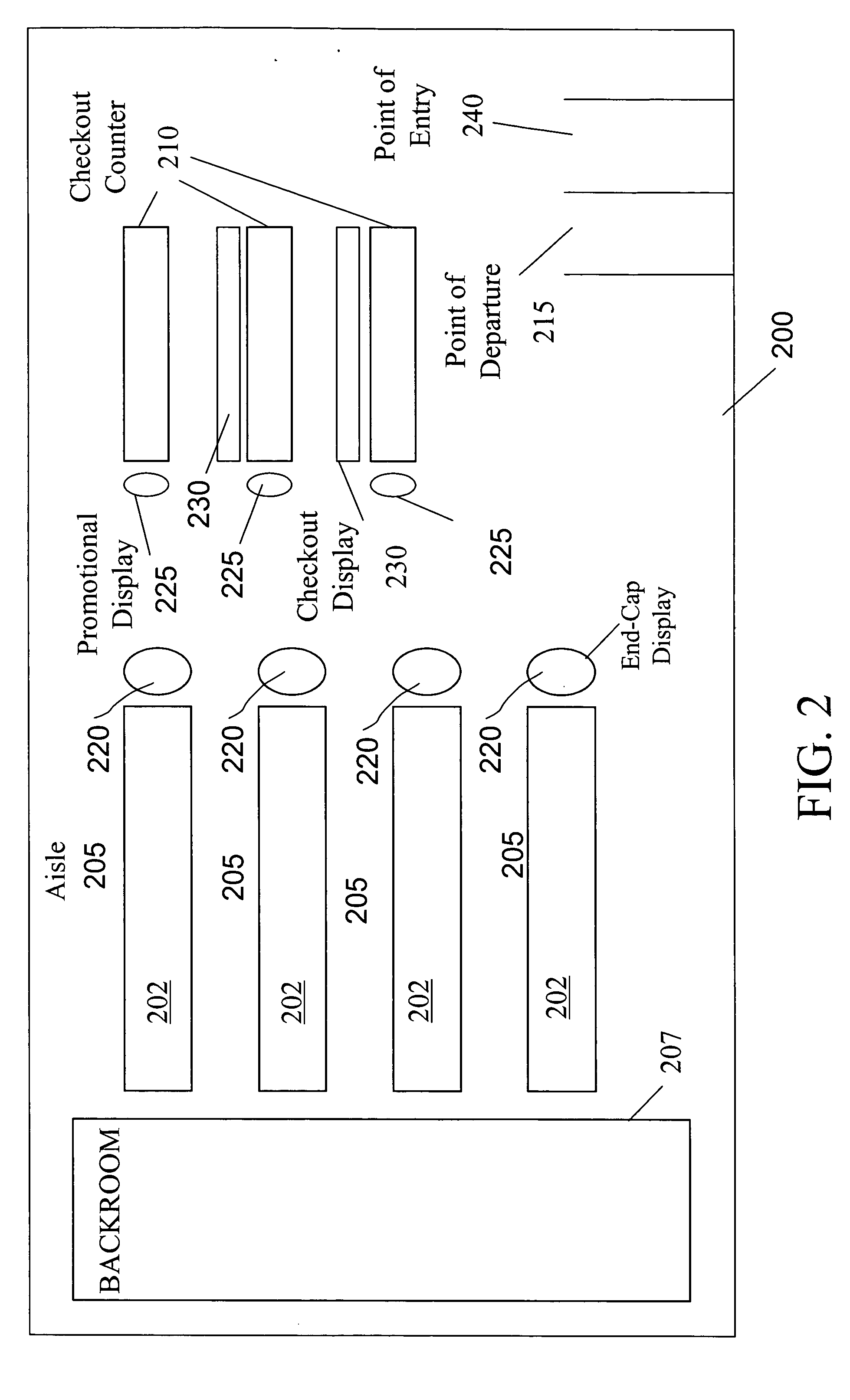System and method employing radio frequency identification in merchandising management
a radio frequency identification and merchandising management technology, applied in the field of system and method employing radio frequency identification in merchandising management, can solve the problems of increasing the complexity of merchandising-related choices imposed on manufacturers and retailers, the technology used to carry out such merchandising and training has not kept pace with the increase in market competition, and the bar coding can be labor-intensive and thus costly
- Summary
- Abstract
- Description
- Claims
- Application Information
AI Technical Summary
Benefits of technology
Problems solved by technology
Method used
Image
Examples
Embodiment Construction
[0034] RFID broadly describes technologies that use radio-frequency waves to identify individual items. Typically, RFID tags that transmit radio waves are affixed to the items. The radio waves thus emitted are detected (read) by RFID readers. The fundamentals of RFID technology are well-known to those of skill in the art, and the present application focuses on aspects of RFID that contribute to an understanding of the present invention.
[0035]FIG. 1 shows the main components in the retail use of RFID technology. To track individual products 105, a readable RFID tag 100 is used. The tag 100 can be either active or passive. In an active tag 100, the tag 100 typically has a power source, a microchip and an antenna (which may be coiled). The tag 100 actively transmits information contained on the tag 100 such as unique product identifier information. In a passive tag 100, a signal from a reader 110 activates the tag 100 which then transmits the identification information. In both the ac...
PUM
 Login to View More
Login to View More Abstract
Description
Claims
Application Information
 Login to View More
Login to View More - R&D
- Intellectual Property
- Life Sciences
- Materials
- Tech Scout
- Unparalleled Data Quality
- Higher Quality Content
- 60% Fewer Hallucinations
Browse by: Latest US Patents, China's latest patents, Technical Efficacy Thesaurus, Application Domain, Technology Topic, Popular Technical Reports.
© 2025 PatSnap. All rights reserved.Legal|Privacy policy|Modern Slavery Act Transparency Statement|Sitemap|About US| Contact US: help@patsnap.com



